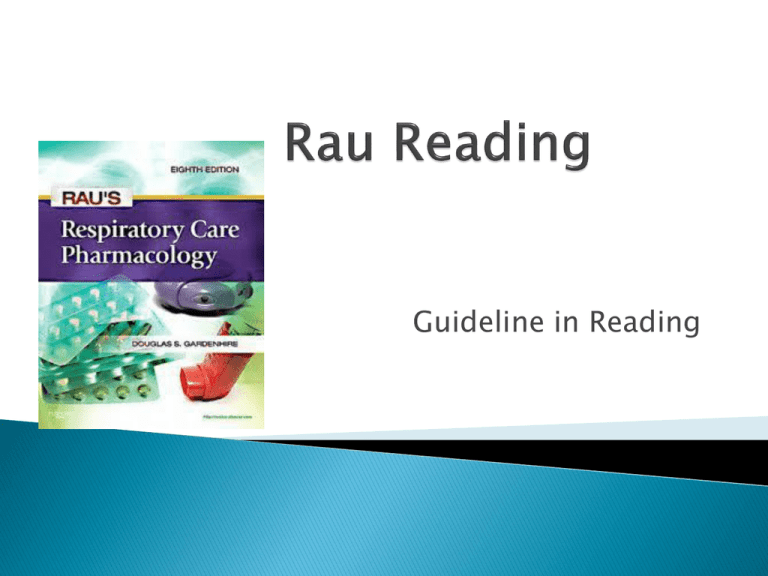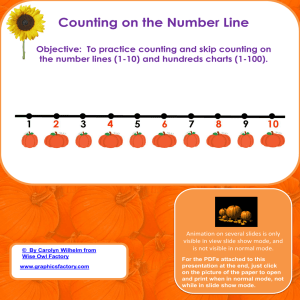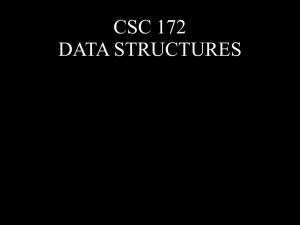File - Respiratory Therapy Files
advertisement

Guideline in Reading You are responsible for the lecture material and all reading material. Please study accordingly QUIZ 1 on pharmacology will cover Ch. 1-3, 5-7 in the reading QUIZ 2 on pharmacology will include lecture and reading 8-14 Pharmacology exam will cover all respiratory pharm 5 Quizzes 100 points (20 each) 4 Exams 400 points (100 each) 1 Presentations 40 points 4 Homeworks 20 points (5 each) 1 final exam 200 points I WILL DROP 1-2 QUIZZES Total: 760 points Skip: Page 6 animal studies and investigational drug approval, new drug application Know/Read: Key terms page 2 Naming drugs page 4 Orphan drugs (definition) page 6 Prescription (what constitutes a proper prescription) page 6-7 ◦ Over the counter drugs (definition) page 7 ◦ Pharmacology overview page 8-10 ◦ ◦ ◦ ◦ Skip: Volume distribution pg 16 Plasma time curves and half life page 18-19 Lung Availability/total systemic availability ratio page 21 Potency versus maximal effect page 27 Therapeutic index page 27 Read/Know (all material not skipped) In particular: ◦ Key terms ◦ Drug administration phase Including routes of administration; enteral, parenteral, transdermal, topical, inhalation ◦ The pharmacokinetic phase Definition, absorption (factors affecting it), distribution (may skip volume distribution) Metabolism (biotransformation, first pass effect) Elimination (plasma clearance) Read/Know (all material not skipped) In particular: ◦ Pharmacokinetics of inhaled aerosol drugs page (Local vs systemic effect, aerosols in pulmonary disease; skip lung availabilty) ◦ The pharmacodynamic phase Drug receptors, receptor activation, ion channels, Gprotiens, agonists/antagonists, drug interactions, drug responsiveness Read/Know (all material not skipped) In particular: ◦ Pharmacogenetics Skip: ◦ Measurement of particle size distributions ◦ Lung Deposition and loss patterns with traditional aerosol devices Read/Know: ◦ Key terms ◦ Physical principles of inhaled aerosol drugs ◦ Aerosol particle size distributions MMAD in particular ◦ Particle size and lung disposition Particle size and therapeutic effect page Mechanisms of deposition (inertial impaction, gravitational settling, diffusion) Effect of temperature and humidity Read/Know: ◦ Aerosol devices for drug delivery Ultrasonic SPAG SVN Dead volume, filling volume/treatment time, effect of flow rate, type of power gas, type of solution Metered dose inhalers Technical description, correct use of MDI, factors affecting inhaler performance, breath actuated inhalers, HFA MDI inhaler reservoir devices Electrostatic charge Read/Know: ◦ Dry powder inhalers page 54-55 ◦ Clinical Application of aerosol delivery page 55-56 ◦ Administration by IPPB, face mask and endotracheal tube page 60 Skip: ◦ NOTHING ALL GOOD MATERIAL Know/Review: ◦ Key terms pg 81 ◦ The nervous system pg 81-85 Neurotransmitters, parasympathetic and sympathetic regulation, efferent/afferent nerve fibers ◦ Parasympathetic branch page 85-87 Muscarinic and nicotinic receptors Know/Review: ◦ Cholinergic agents page 87-88 Direct and indirect acting ◦ Anticholingergic agents page 89 Atropine, parasympatholytic effects ◦ Sympathetic Branch page 90-94 Adrenergic neurtotransmitter function, enzyme inactivation, receptor types, TABLE 5-5, Beta receptors, alpha receptors; you can skip dopaminergic receptors Know/Review: ◦ Sympathomimetic adrenergic and sympatholytic antiadrenergic agents (page 94) Table 5-6 ◦ Neural control of lung function Airway smooth muscle, lung blood vessels, mucus glands ◦ Parasympathetic innervation (muscarinic receptors; M1-3) ◦ May skip Non adrenergic inhibitory nerves page 99101 Skip: ◦ ◦ ◦ ◦ ◦ ◦ Any chemical structure/line graphs Keyhole theory page 107 Resorcinol agents page 109 Bitolterol page 110-111 Oral and parenteral routes page 121-122 Skip page 126-127 Know/read: ◦ Key terms page 104 ◦ Clinical indications page 104-115 Short acting, long acting, racemic epi indication ◦ Specific adrenergic agents Catecholamines, stereoisomers (basic concept), TABLE 6-1, Saligen agents, Pirbuterol, Levalbuterol Long Acting bronchodilators; salmeterol, formoterol, arformeterol, antiinflammatory effects, clinical use Know/read: ◦ MODE of ACTION page 116-120 Beta receptor and alpha receptor activation, alpha 1 activation, Salmertol, formoterol and arfometerol mode of action pg 119-120 ◦ Routes of administration page 120-121 Continuous nebulization, inhalation route ◦ Adverse side effects page 122-126 Tremor, cardiac, tolerance, loss of bronchoprotection, CNS effects MAY SKIP THE REST Skip: ◦ Clinical pharmacology page 135-136 ◦ Vagally mediated reflex bronchoconstriction page 139-140 Know/read: ◦ ◦ ◦ ◦ ◦ Key terms page 133 Clinical indication page 133 Specific agents page 133-135 TABLE 7-1 Pharmacological effects of anticholinergics page 137 Tertiary ammonium compounds, quaternary compounds Know/read: ◦ Mode of action page 138-143 Muscarinic receptor subtypes TABLE 7-4 ◦ Adverse effects page 142-143 BOX 7-1 ◦ Clinical Application page 143-146 COPD Asthma Combination Respiratory care assessment page 147 Skip: ◦ ◦ ◦ ◦ ◦ All chemical structures Structure activity relations page 153 Antagonism of Adenosine page 154 Titrating theophylline doses page 155-156 Factors affecting theophylline activity page 157 Know/Read: ◦ Key Terms page 151 ◦ Clinical indications page 151-152 ◦ ◦ ◦ ◦ ◦ Asthma, COPD, apnea of prematurity Specific Xanthine agents page 152 General properties page 152-153 Inhibition of Phosphodiesterase page 153 Theophylline side effects page 156-157 Clinical uses page 158-159 Asthma, COPD, muscle strength, central ventilatory drive, cardiovascular, antiinflammatory, apnea of prematurity Skip: ◦ Table 9-2 ◦ Source of airway secretions (you know this already) page 164 ◦ Nature of mucus secretion/structure and composition of mucus page 168-171 (NOT ALL OF IT SEE NEXT SLIDE) ◦ Physical properties of mucus page 172-174 ◦ F-actin depolymerizing drugs page 177-178 ◦ Expectorants EXCEPT ONES LISTED IN FOLLOWING SLIDE page 178 Skip: ◦ Mucokinetic agents (review bronchodilator effect on cilia but skip the rest) page 179 ◦ Mucoregulator medications page 179 ◦ Other mucoactive agents page 180 ◦ Gene therapy page 180-181 ◦ Review page 181-183 but we have already gone over in class ◦ Future agents page 183-184 Know/read: ◦ ◦ ◦ ◦ ◦ Key terms page 163 Clinical indication page 164 Factors affecting mucocilliary transport page 168 Food intake and mucus production page 168 Nature of mucus secretion page 168-172 Mucus composition, mucus in disease states (chronic bronchitis, asthma, bronchorrhea, plastic bronchitis, cystic fibrosis) Know/read: ◦ ◦ ◦ ◦ ◦ ◦ Mucoactive agents page 174 TABLE 9-4 pahe 174 Mucolytics and mucocilliary clearence page 175 N-Acetylcysteine page 175-176 Dornase alfa page 176-177 Expectorants page 178 Sodium Bicarbonate, Guaifenesin ◦ RT assessment of mucoactive drug page 184 Skip: ◦ Lipids and Proteins page 195-196 ◦ Future directions of surfactant page 200-201 ◦ RT assessment page 201 (you will learn this with neonates) ◦ Any specific detail on the administration of surfactant beyond endotracheal delivery Know/Read: Key terms page 192 Perspective page 192 Application to the lung page 192 Clinical indications for exogenous surfactant page 192-193 ◦ Composition of pulmonary surfactant page 193 ◦ TABLE 10-1 you don’t need to know the formulations ◦ ◦ ◦ ◦ Know/Read: ◦ Production of Surfactant page 196 ◦ Types of surfactant page 196-197 ◦ Specific types page 198 Survanta, Infasurf, Curosurf (don’t worry about the details for administration) ◦ Mode of Action page 199-200 ◦ Hazards page 200 Skip: ◦ ◦ ◦ ◦ ◦ ◦ TABLE 11-2 Any chemical structure Any nasal steroids BOX 11-2 Topical steroids Table 11-3 Know/Read: Key terms page 205 Clinical indications page 205 Physiology of corticoid steroids page 205-209 TABLE 11-1 (skip azmacort and Aerobid) Page 208 review Diurnal cycle page 209 Nature of inflammation page 209-212 Aerosolized agents page 212-214; Skip Azmacort and Aerobid ◦ KNOW DOSES ONLY FOR: QVAR, ADVAIR, FLOVENT, PULMICORT, SYMBICORT= ADULT DOSES ◦ ◦ ◦ ◦ ◦ ◦ ◦ ◦ Know/read: ◦ Mode of action page 215 Effect on WBC’s, beta receptors Hazards and side effects page 217-219 ◦ Both aerosolized and systemic ◦ Topical side effect with aerosol administration Clinical Application page 220 ◦ Asthma, COPD Skip: ◦ BOX 12-2 ◦ Chemical structures ◦ Cell sources of leukotrienes and biochemical pathways page 236-238 ◦ Leukotriene production page 238 ◦ CysLT receptors page 238-239 ◦ Dosages for anti leukotrienes ◦ Churg-Strauss Syndrome page 243 ◦ RSV page 244 Read/Know: ◦ Key terms page 226 ◦ Clinical indication page 227 ◦ Mechanisms in inflammation in asthma page 227228 ◦ Immunological response page 228-230 ◦ Cromolyn Sodium page 230-234 Skip nasal drugs, clinical efficacy page 234 Clinical application page 234 ◦ Tilade page 235-236 Skip clinical efficacy Read/Know: ◦ Antileukotriene agents page 238 SKIP ALL DOSAGES, CELL SOURCES AND BIOCHEMICAL PATHWAYS Zileuton page 239 basic mode of action only Accolate page 240 basic mode of action only Singulair page 241 mode of action Role of antileukotriene drugs in asthma page 241-243 SKIP TABLE 12-2 AND BOX 12-3 Monoclonal antibodies page 244 Omalizumab (mode of action) Skip: ◦ ◦ ◦ ◦ Side effects with parenteral pentamidine page 255 Aerosol therapy for prophylaxis of PCP page 256 Other treatments for RSV page 261-262 Clinical efficacy of Tobi page 264-265 Know/Read: ◦ Key terms page 252 ◦ Description of PCP page 253-254 ◦ Nebupent dosage not important (read though) page 254 ◦ Administration of Nebupent page 254 ◦ Nebulizer performance page 255 ◦ Mode of action page 255 ◦ Side effects of aerosolized nebupent only page 255 ◦ Environmental contamination page 256 Know/Read: ◦ ◦ ◦ ◦ ◦ ◦ ◦ ◦ ◦ Ribavirin page 257 Clinical use page 257 SKIP NATURE OF VIRAL INFECTION you know this RSV infection page 258 SKIP dosage page 258 Administration with SPAG page 258-259 Mode of action page 259-260 Side effects page 260 Aerosolized Tobi page 262-263 Skip parenteral use Side effects of Tobi page 264 Skip clinical efficacy Zanamivir page 265 (skip dosage and table 13-2) Basic mode of action and adverse effects Read entire chapter but… Don’t worry about specific names or dosages, just read to understand basic mechanisms and production and resistance of anti microbials, anti fungals and anti virals




